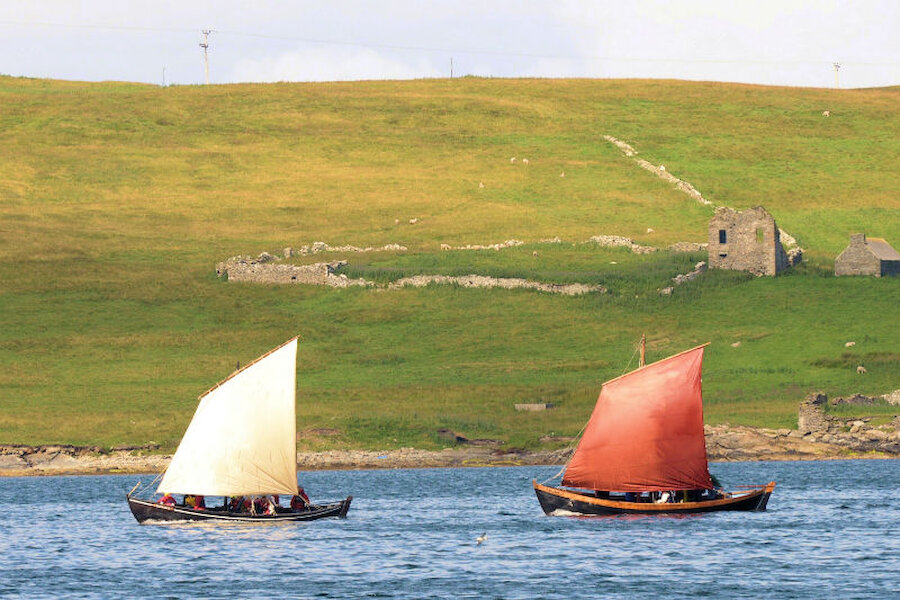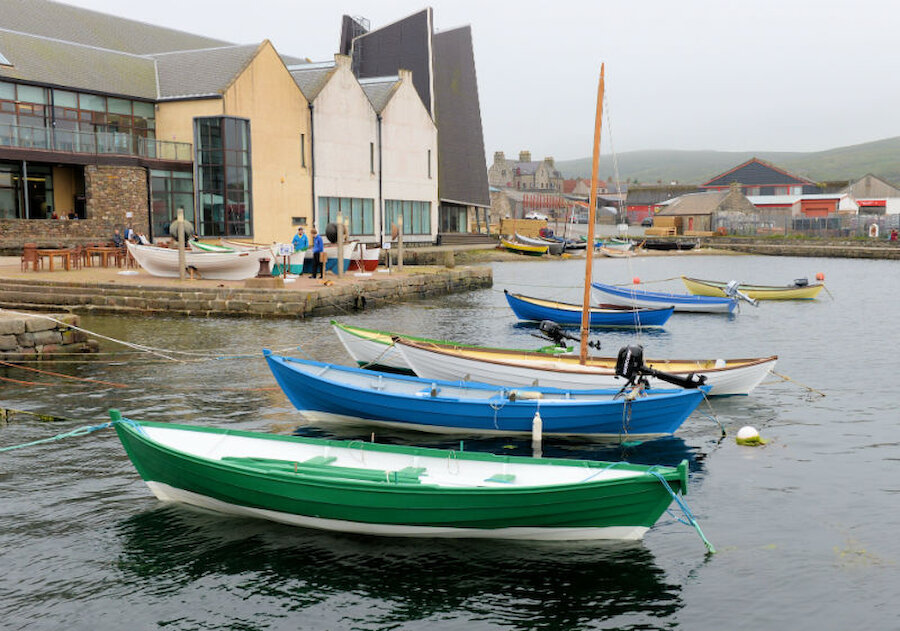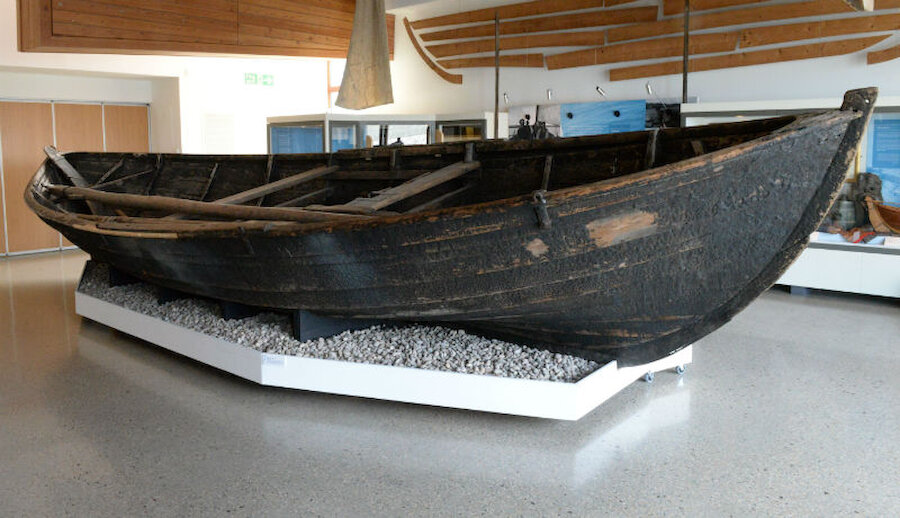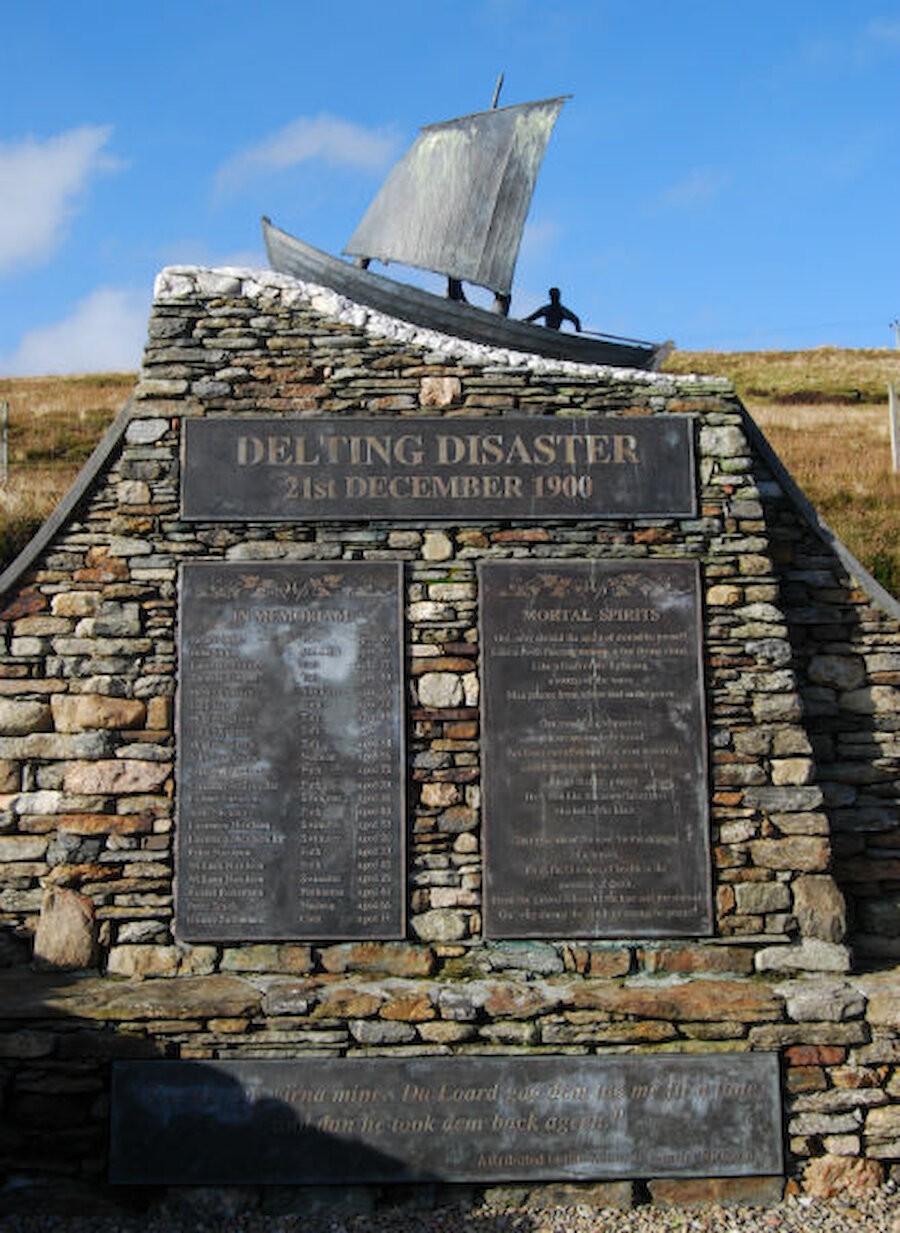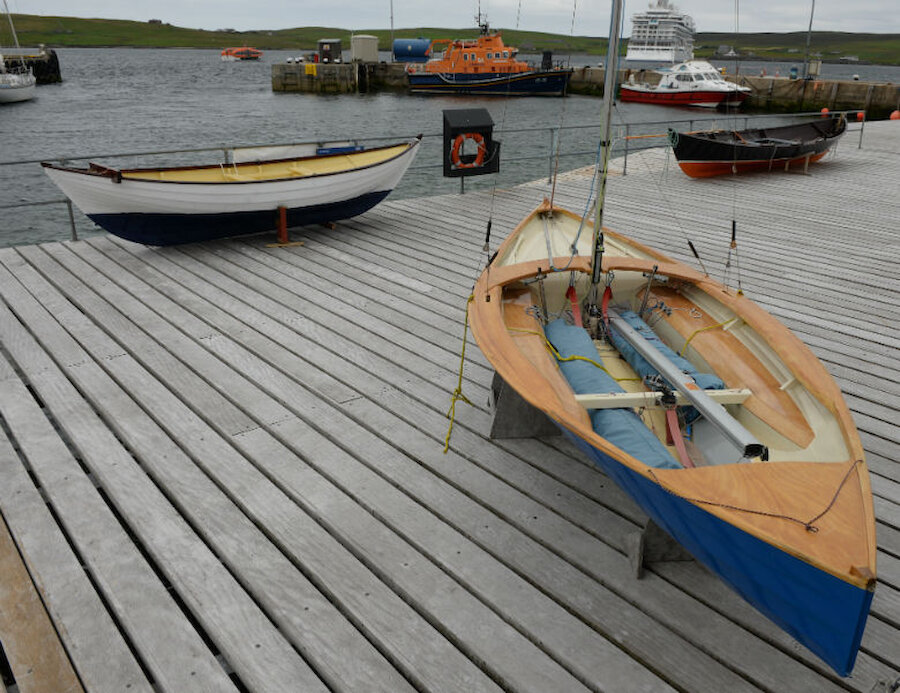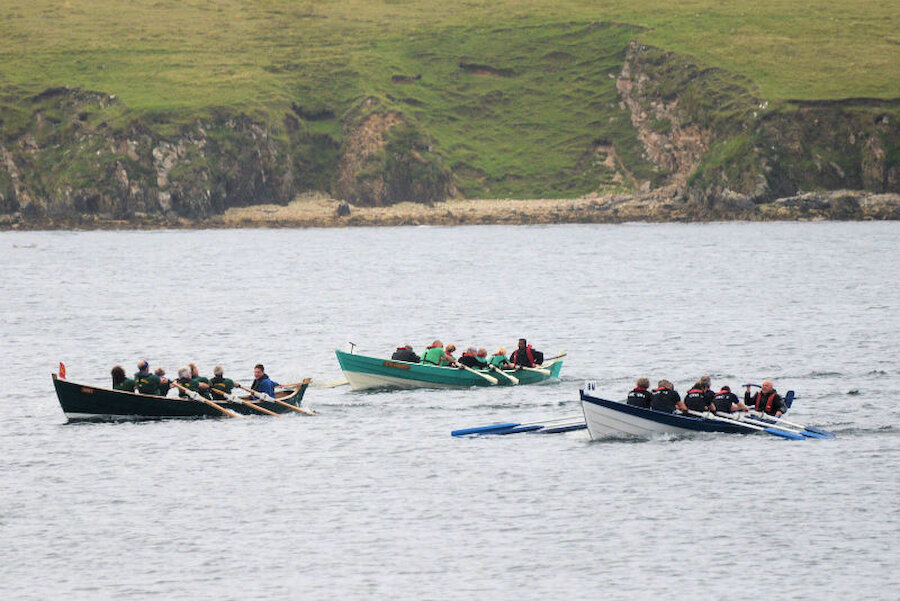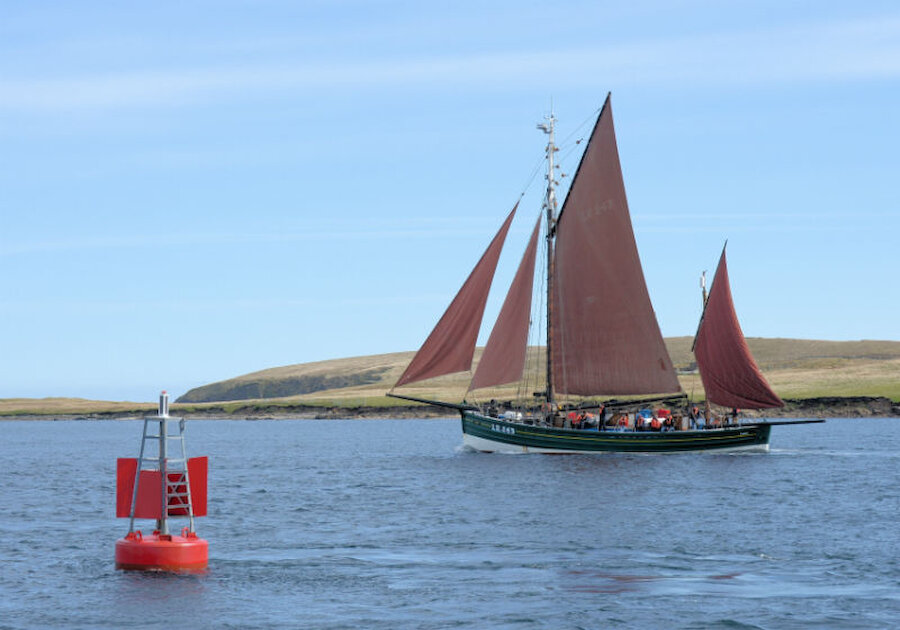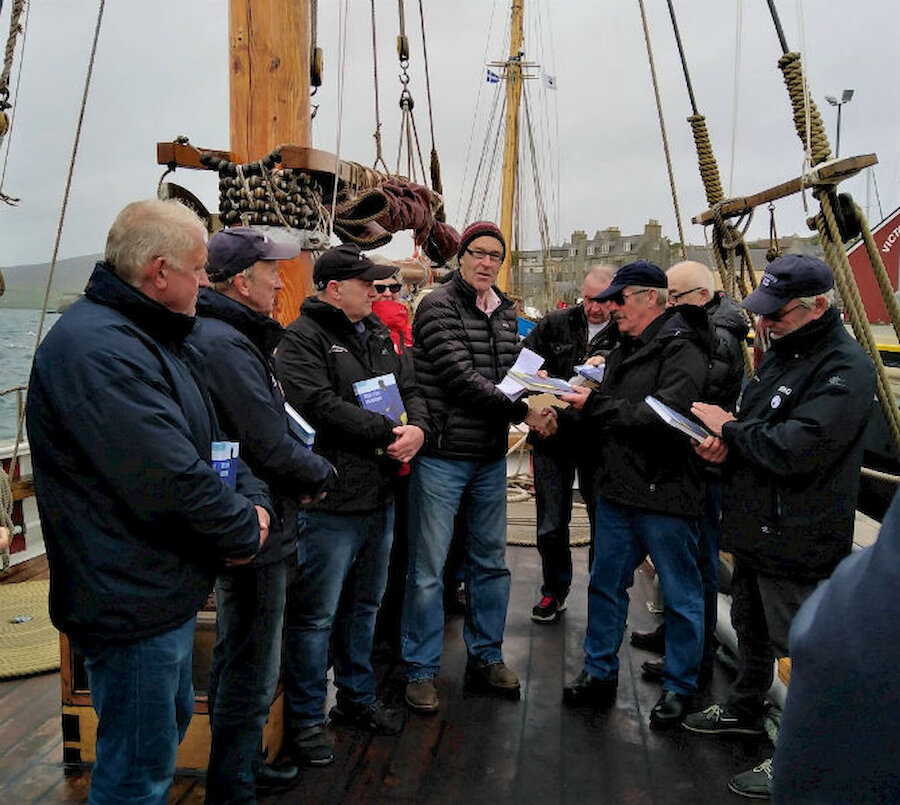The larger sailing vessels were far better able to cope with variable weather than sixerns and hundreds were put into service. They fished for haddock, cod and other species and the size of the catches led to a corresponding increase in the scale of the fish processing industry. Whereas fish caught by sixern crews had often simply been laid out to dry on the beach, large areas of newly-developed quaysides – especially in Baltasound and Lerwick – were now occupied by gutting and packing stations, with cooperages providing the barrels in which the salted fish was packed for export. There were even short industrial railways, used for moving trolley-loads of fish around the sites.
Herring was the main prize towards the end of the 19th century and the fishery reached its peak in the early 1900s. Two types of sail-fishing vessel were popular, “Fifies” and “Zulus”, and every port in Shetland saw huge numbers of them. One “Fifie” survives in Shetland today. Swan was launched at Hay’s Dock in Lerwick in 1900, as the Shetland News reported at the time:
An interesting event took place at Freefield docks on Thursday, when a fine new boat was launched for the yard of Messrs Hay & Co. The boat has been built to the order of Messrs Hay & Co., and Mr Thos. Isbister, and is acknowledged by competent judges, both local and Scotch, to be one of the finest fishing boats afloat in the North of Scotland, as regards to model, strength or workmanship.
She is the largest ever built in Lerwick her dimensions being:- Length overall, 67 feet; length of keel, 60.5 feet; beam, 20 feet outside; depth, 9.5 feet from keelson. The timbers are mostly of oak, with larch and pitch pine skin, and in her whole construction practically no expense has been spared in order to secure strength. Fitted with steam capstan and all the latest labour-saving appliances, the boat has every chance of a successful career, and we hope that good luck will always follow her. The launch was carried out most successfully. Miss Ottie Isbister, daughter of the skipper, performed the christening ceremony, the boat being named the "Swan"; and when the fastenings were cut, she left the ways in grand style, and took to the water like a duck, being brought up in the limited space in a most masterly manner. Mr Leask, the builder, is to be congratulated on this his latest addition to the Shetland fishing fleet.
The Shetland News, 5th May 1900

